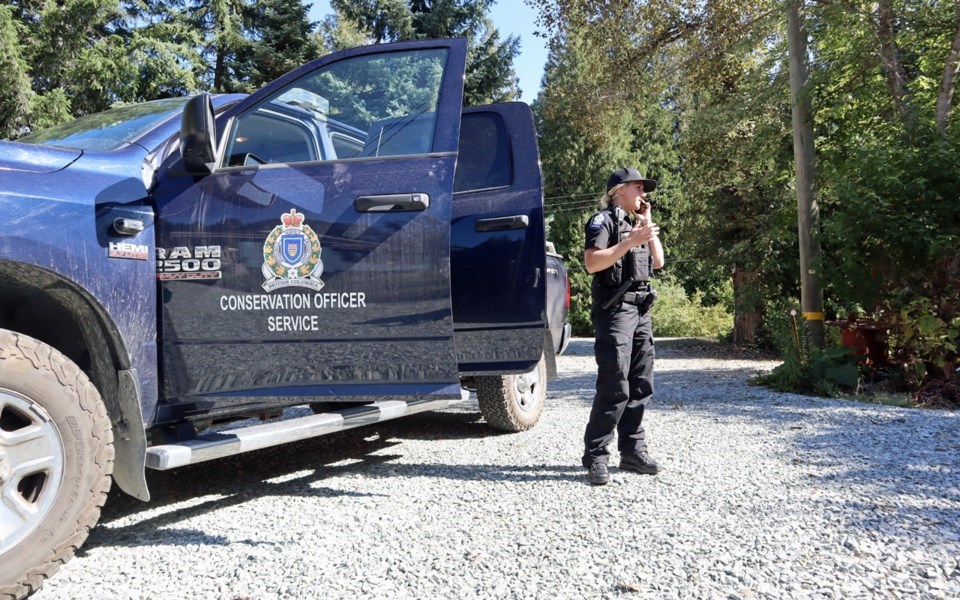There has long been an entrenched belief among a not insignificant portion of the Whistler community that calling the Conservation Office Service (COS) over a pesky bear will almost certainly lead to the animal’s killing.
There is plenty to question in how the COS manages bears, but I’m not one who assumes conservation officers get into this career to kill animals. The numbers locally appear to back this up as well.
Data obtained last year through a Freedom of Information request by wildlife advocacy group The Fur-Bearers showed that, province-wide, the number of black bears killed in B.C. had remained relatively consistent since 2015, hovering between 415 and 632 deaths per year. While certain communities, such as Prince George and 100 Mile House, were seeing outsized numbers of bears killed compared to the rest of B.C., Whistler, one of 10 certified BearSmart communities in the province, has trended in the opposite direction.
Bear killings in the resort have been on a steady downswing since at least 2015, when eight bears were killed, down to a low of two bears in 2021, the last year covered by the Freedom of Information request.
That’s in spite of millions of curious visitors to Whistler and literally thousands of calls from the Sea to Sky to the COS in a given year. According to B.C.’s environment ministry, this year so far, Sea to Sky residents have called the COS’ Report All Poachers and Polluters hotline more than 4,000 times over human-wildlife conflict.
Whistler and the rest of the corridor should take a considerable share of the credit for this decline, with the persistent, years-long messaging around securing attractants and giving bears the space they need clearly having its intended effect. But the relatively low numbers of bear killings points to evidence that conservation officers aren’t as trigger-happy as some make them out to be.
The more glaring issue at the heart of the COS’s approach to wildlife is an altogether simpler one: resourcing. The province of B.C. counts 143 sworn conservation officers posted to 45 communities. Just five of those are committed to the Sea to Sky region—which, by the COS’ definition, stretches from North Van to Pemberton—but that doesn’t necessarily mean all five of those officers are working on a given day. A ministry spokesperson explained to Pique the number of officers on duty depends on a variety of factors, such as days off, leave allotments, training requirements, and more.
So, going by the COS’ own figures, let’s do a bit of napkin math here: At roughly 4,000 calls to the COS from the Sea to Sky this year, that averages to 400 calls a month, or about 13 calls a day. Of course, it’s reasonable to assume a good portion of those calls don’t require attendance by an officer, but even if a small fraction of them do, how are we expected to believe the COS is equipped to deal with wildlife in a timely manner that will be what’s best for both the animal and the public at large?
The COS often talks up the value of calling its RAPP line early, to give officers enough time to intervene before an animal’s behaviour requires them to resort to lethal measures. As we well know in Whistler, the most serious wildlife encounters are often measured in a matter of moments, not hours or days, and if there’s even one call in another Sea to Sky community taking up officers’ attention, there’s a good chance by the time they attend the call, if they even make it there at all, the opportunity to intervene has long since passed.
As Pique has written about in this space before, the COS’ lack of physical presence hasn’t been bolstered of late with robust communication to the public. Take the grizzly recently spotted around Myrtle Philip Community School, raising concern for Tapley’s residents as they, at the time of this writing, get set to welcome more than 1,000 trick-or-treaters and their families to the neighbourhood to celebrate Halloween.
In an Oct. 27 wildlife alert, the Resort Municipality of Whistler (RMOW) said the COS had captured and relocated the grizzly. Then, on Halloween, the environment ministry put out a statement, based on info from the COS, confirming the bear was back in the area just days after been relocated.
Historically speaking, the COS was usually a phone call away, and while they didn’t always get back to us right away, you always knew someone would eventually. More recently, the Crown agency has been filtering all of its communications either through the Ministry of Environment or the RMOW, adding even more time and bureaucracy to what should amount to simple and direct messaging to the public, messaging, it should be reiterated, that is directly connected to this community’s safety. Of course it also means the COS doesn’t have to answer direct questions about its tactics, or, indeed, its staffing levels.
Wherever you stand on the debate around the COS’ reliance on lethal measures in dealing with bears, there’s no debating the agency has a serious staffing problem that doesn’t serve wildlife or the public it has sworn to protect.





